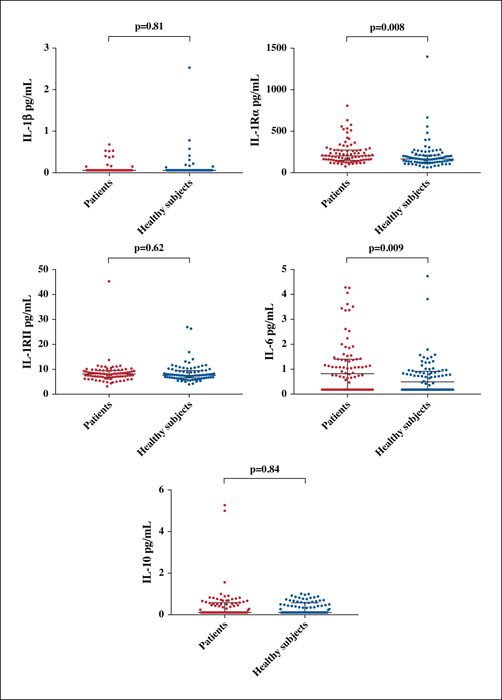European Journal of Dermatology
MENUFatigue in patients with plaque-type psoriasis: lack of an association with plasma cytokines Volume 30, numéro 1, January-February 2020
- Mots-clés : psoriasis, cytokines, fatigue, illness behaviour
- DOI : 10.1684/ejd.2020.3701
- Page(s) : 16-23
- Année de parution : 2020
Background: Fatigue is common in patients with psoriasis, and cytokines have been postulated to influence fatigue. Objectives: This case-control study explored the plasma levels of selected cytokines in patients with psoriasis and compared them with fatigue and other clinical factors. Materials and Methods: Eighty-four patients with chronic plaque-type psoriasis and 84 age- and gender-matched healthy subjects were enrolled. Psoriasis severity was measured using the Psoriasis Area and Severity Index (PASI), and skin-related quality of life using the Dermatology Life Quality Index (DLQI). Fatigue was rated with the fatigue Visual Analogue Scale (fVAS). Plasma levels of interleukin (IL)-1β, IL-1Rα, IL-1RII, IL-6, and IL-10 were measured by electrochemiluminescence sandwich immunoassay and ELISA. Results: IL-1Rα and IL-6 median concentrations were significantly higher in patients than healthy subjects: 203 pg/mL (interquartile range: 150-274) versus 166 pg/mL (128-212), p=0.008 for IL-Rα, and 0.82 pg/mL (0.25-1.40) versus 0.50 pg/mL (0.25-0.91), p=0.009 for IL-6. IL-1β, IL-1RII, and IL-10 concentrations did not differ between patients and healthy subjects. Higher levels of IL-1Rα and IL-6 were associated with increased body mass index (BMI), but not with disease activity. Cytokine concentrations were not associated with fatigue. Conclusion: These findings do not support an association between fatigue and blood concentrations of selected pro- and anti-inflammatory cytokines. The increased IL-1Rα and IL-6 levels associated with increased BMI are probably caused by release of adipokines from adipose tissue; of these, leptin, in particular, is known to be a strong inflammatory stimulator.


